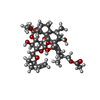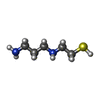Entry Database : PDB / ID : 7nizTitle Human 14-3-3 sigma in complex with human Estrogen Receptor alpha peptide and ligands Fusicoccin-A and WR-1065 14-3-3 protein sigma Estrogen receptor Keywords / / / Function / homology Function Domain/homology Component
/ / / / / / / / / / / / / / / / / / / / / / / / / / / / / / / / / / / / / / / / / / / / / / / / / / / / / / / / / / / / / / / / / / / / / / / / / / / / / / / / / / / / / / / / / / / / / / / / / / / / / / / / / / / / / / / / / / / / / / / / / / / / / / / / / / / / / / / / / / / / / / / / / / / / Biological species Homo sapiens (human)Method / / / Resolution : 1.48 Å Authors Roversi, P. / Falcicchio, M. / Doveston, R. Funding support Organization Grant number Country Wellcome Trust 204801/Z/16/Z Wellcome Trust 214090/Z/18/Z
Journal : Chem Sci / Year : 2021Title : Cooperative stabilisation of 14-3-3 sigma protein-protein interactions via covalent protein modification.Authors : Falcicchio, M. / Ward, J.A. / Chothia, S.Y. / Basran, J. / Mohindra, A. / Macip, S. / Roversi, P. / Doveston, R.G. History Deposition Feb 14, 2021 Deposition site / Processing site Revision 1.0 Dec 1, 2021 Provider / Type Revision 1.1 Jan 31, 2024 Group / Refinement descriptionCategory / chem_comp_bond / pdbx_initial_refinement_modelRevision 1.2 Oct 1, 2025 Group / Structure summaryCategory / pdbx_modification_feature / struct_connItem
Show all Show less
 Yorodumi
Yorodumi Open data
Open data Basic information
Basic information Components
Components Keywords
Keywords Function and homology information
Function and homology information Homo sapiens (human)
Homo sapiens (human) X-RAY DIFFRACTION /
X-RAY DIFFRACTION /  SYNCHROTRON /
SYNCHROTRON /  FOURIER SYNTHESIS / Resolution: 1.48 Å
FOURIER SYNTHESIS / Resolution: 1.48 Å  Authors
Authors United Kingdom, 2items
United Kingdom, 2items  Citation
Citation Journal: Chem Sci / Year: 2021
Journal: Chem Sci / Year: 2021 Structure visualization
Structure visualization Molmil
Molmil Jmol/JSmol
Jmol/JSmol Downloads & links
Downloads & links Download
Download 7niz.cif.gz
7niz.cif.gz PDBx/mmCIF format
PDBx/mmCIF format pdb7niz.ent.gz
pdb7niz.ent.gz PDB format
PDB format 7niz.json.gz
7niz.json.gz PDBx/mmJSON format
PDBx/mmJSON format Other downloads
Other downloads 7niz_validation.pdf.gz
7niz_validation.pdf.gz wwPDB validaton report
wwPDB validaton report 7niz_full_validation.pdf.gz
7niz_full_validation.pdf.gz 7niz_validation.xml.gz
7niz_validation.xml.gz 7niz_validation.cif.gz
7niz_validation.cif.gz https://data.pdbj.org/pub/pdb/validation_reports/ni/7niz
https://data.pdbj.org/pub/pdb/validation_reports/ni/7niz ftp://data.pdbj.org/pub/pdb/validation_reports/ni/7niz
ftp://data.pdbj.org/pub/pdb/validation_reports/ni/7niz
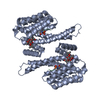
 Links
Links Assembly
Assembly

 Components
Components Homo sapiens (human) / Gene: SFN, HME1 / Production host:
Homo sapiens (human) / Gene: SFN, HME1 / Production host: 
 Homo sapiens (human) / References: UniProt: P03372
Homo sapiens (human) / References: UniProt: P03372 X-RAY DIFFRACTION / Number of used crystals: 1
X-RAY DIFFRACTION / Number of used crystals: 1  Sample preparation
Sample preparation SYNCHROTRON / Site:
SYNCHROTRON / Site:  Diamond
Diamond  / Beamline: I24 / Wavelength: 0.9999 Å
/ Beamline: I24 / Wavelength: 0.9999 Å Processing
Processing FOURIER SYNTHESIS
FOURIER SYNTHESIS Movie
Movie Controller
Controller


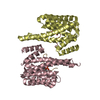
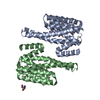
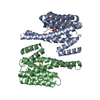
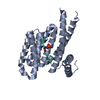
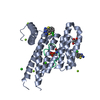

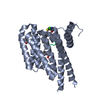



 PDBj
PDBj
















